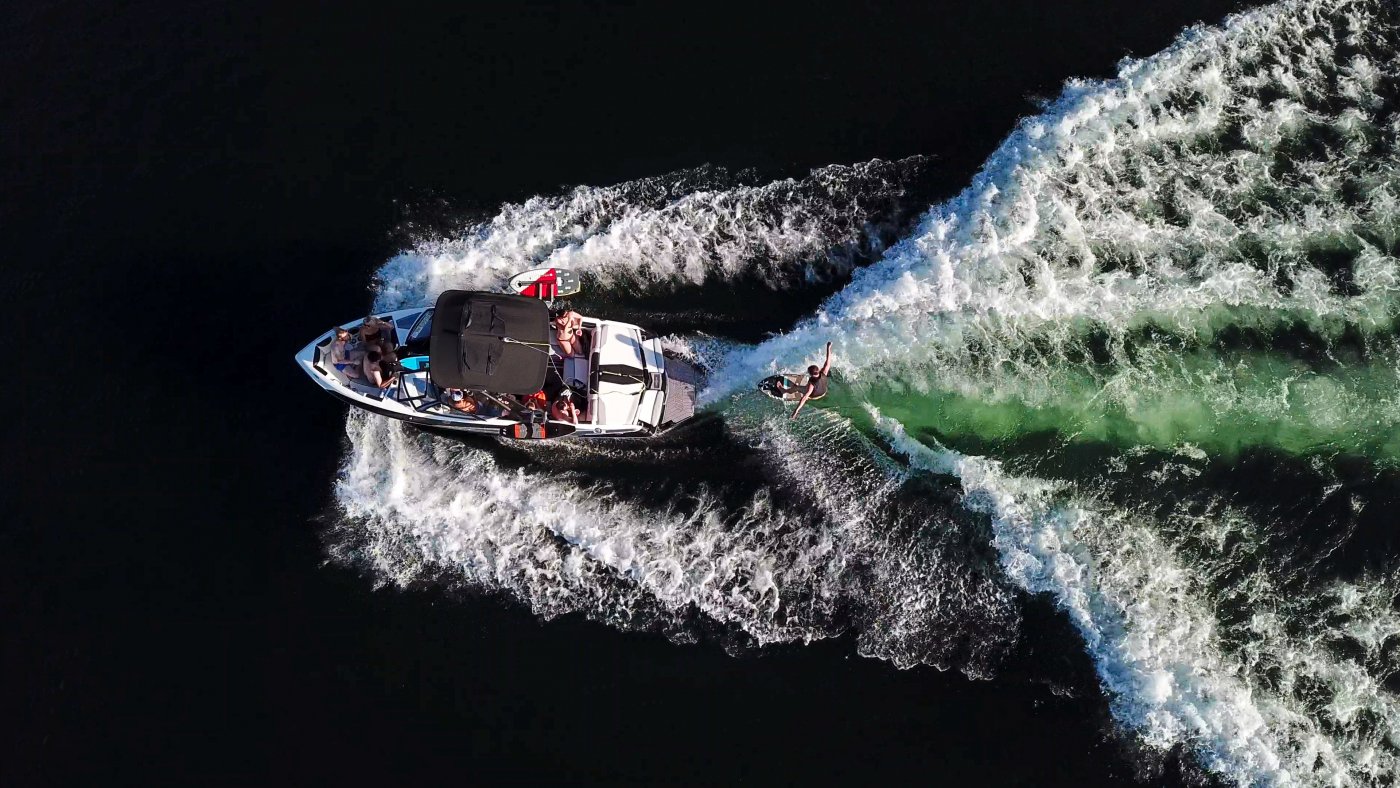Bill would limit regulation of wakesports; remove local authority to manage impacts
AB656/SB680 fails to provide meaningful standards and prohibits local governments from being stricter, while allowing them to be weaker
The bill Wisconsin Lakes reported on in October was formally introduced into the Wisconsin legislature with no changes. LRB-3518 is now AB656 in the Assembly and SB680 in the Senate.
Wisconsin Lakes is OPPOSED
AB655/SB680 would prohibit wakesports (defined in the bill as “wakesurfing” and “wakeboarding”):
- On lakes 50 acres or smaller regardless of whether a public access point exists (under current law, all lakes 50 acres or smaller with public access are already designated as “slow, no wake”),
- On lakes 400 feet or smaller in width, and
- On other lakes within 200 feet of shore or within 100 feet of boat landings, anchored boats, marked swim areas, or personal watercraft.
While that language does create a state standard for wakesport regulation, it is not a minimum, nor is it a uniform state standard. Instead, the bill allows a local government to enact an ordinance less restrictive than any of those standards, while not allowing more restrictive ordinances. This effectively makes the bill a cap on wakesport regulation.
WHY WISCONSIN LAKES IS OPPOSED TO AB656/SB680
If the Wisconsin Legislature is to enact statewide standards for wakesports, those standards should be sufficient to minimize the impacts from the activities they seek to regulate, and most importantly, local governments should retain the authority to enact ordinances that are more strict than what is in state statutes.

Wisconsin needs meaningful minimum statewide standards that protect aquatic environments, private property, and public safety and enjoyment from the impacts of wakesports, and local governments should retain control to exceed those standards if local conditions warrant.
The best scientific evidence shows that the waves created for wakesports need at least 500, and probably 600-700 feet to dissipate to the same level of shoreland impact as other powerboats. And the prop downwash from these boats can penetrate at least 20 and perhaps up to 30 feet, meaning in shallower depths aquatic plant beds can be damaged, fish habitat ruined, and whatever pollutants are trapped in the lakebed stirred up and distributed out into the lake.
The bill is awaiting public hearings and action by the committees to which it has been assigned in the Assembly and the Senate. Hearings could come in January or as soon as December. With the entire legislature expected to be done with this session perhaps as early as the end of February, if anything is going to happen it will happen soon. (We wrote elsewhere about the legislative process the bill is likely to see. Read more…)
WHAT YOU CAN DO: Contact your legislators and ask them to oppose this bill
To their credit, Sen. Felzkowski and Rep. Swearingen have both indicated a willingness to amend the bill and use the standards in it as a starting point to consider wakesports regulation.
Standards suggested by other proponents of wakesports regulation (like The Last Wilderness Alliance and Lakes at Stake Wisconsin) include similar but slightly different distance or depth standards, or even a wakesports ban on lakes as big at 1500 acres. Wisconsin Lakes is not opposed to any of these options, and supports the efforts of our partner organizations.
Regardless of the specific standards, Wisconsin Lakes will only support a bill that retains authority for local governments to manage wakesports with standards stronger than those statewide minimums, whatever they may be.
The Aquatic Invasive Species (AIS) Issue
Finally, while this bill involves control of the activity of wakesports, the wakeboats that are almost exclusively used to create the waves feature a problem all their own with which Wisconsin needs to deal. The ballast tanks used to weigh down the stern cannot be fully drained, leaving the threat they will spread invasive species from lake to lake a very real possibility.
Wakesports can be undertaken using a wakeboat with ballast tanks or through other means, such as wake-inducing devices that are either factory installed or after market purchases used by a variety of watercraft and as such deserve state-level legislation to set minimum standards for use.
The AIS transfer issue is big and complicated and deserves treatment of its own.
Wisconsin Lakes is committed to working on both issues.

